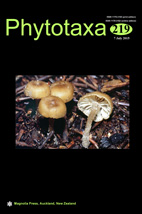Abstract
Thuja, with 5 extant species, exhibiting a disjunctive distribution between East Asia (3 species) and North America (2 species), was investigated with respect to the morphological characters of foliage and cones by LM and SEM. Here we provide 2 keys to all 5 species of Thuja based on the cones and foliage respectively, which not only can be used for identifying extant Thuja at the species level, but also have a great potential for recognizing and/or linking the fossil species to living ones, and further tracing the evolutionary history of the genus.

